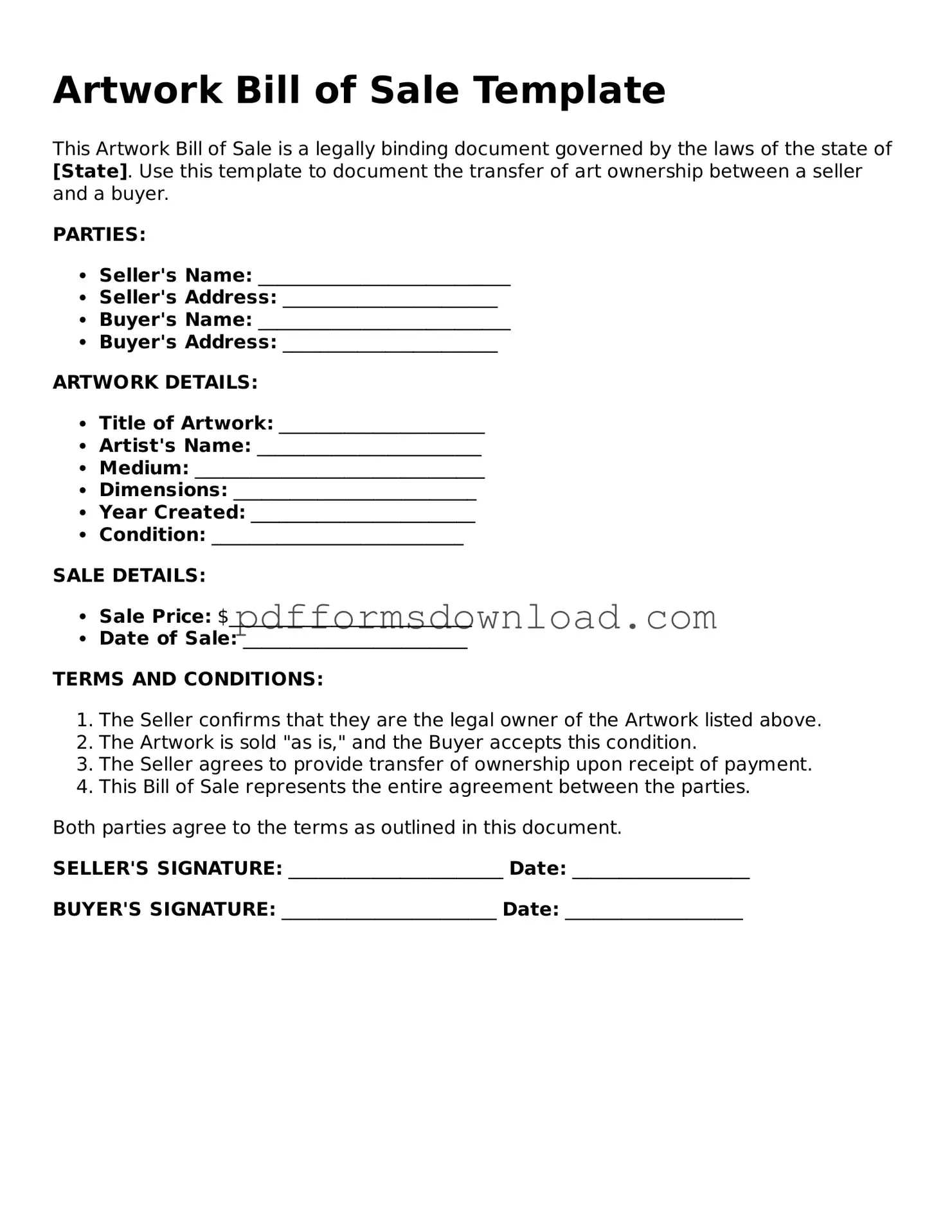What is an Artwork Bill of Sale?
An Artwork Bill of Sale is a legal document that serves as proof of the transfer of ownership of a piece of artwork from one party to another. This form typically includes details about the artwork, such as the title, artist, medium, and any relevant identification numbers. It also outlines the terms of the sale, including the purchase price and the date of the transaction. Having this document protects both the buyer and the seller by clearly stating the terms of the sale.
Why is an Artwork Bill of Sale important?
This document is crucial for several reasons. First, it provides a clear record of the transaction, which can be useful for future reference or disputes. Second, it helps establish the provenance of the artwork, which is important for its value and authenticity. Lastly, it can be necessary for insurance purposes, as it proves ownership in case of loss or damage.
What information should be included in the Artwork Bill of Sale?
A complete Artwork Bill of Sale should include the following information: the names and addresses of both the buyer and the seller, a detailed description of the artwork (including title, artist, medium, and dimensions), the purchase price, the date of sale, and any warranties or representations made by the seller. It’s also wise to include a signature line for both parties to sign, which confirms their agreement to the terms outlined in the document.
Do I need a lawyer to create an Artwork Bill of Sale?
While it is not strictly necessary to hire a lawyer to create an Artwork Bill of Sale, it can be beneficial, especially for high-value pieces or complex transactions. Many templates are available online that can guide you in drafting the document. However, if you have concerns about the legal implications or specific clauses, consulting with a legal professional can provide peace of mind.
Can an Artwork Bill of Sale be modified after the sale?
Once the Artwork Bill of Sale is signed by both parties, it becomes a binding contract. Modifying it after the sale can be tricky. If changes are necessary, both parties should agree to the modifications and sign a new document or an amendment to the original. It’s important to keep a record of all agreements related to the sale to avoid misunderstandings in the future.
